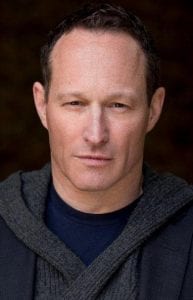“I think science is a little bit more like being an artist. You have to suffer and struggle a bit.”
 An interview with John Krakauer, PhD
An interview with John Krakauer, PhD
Director of BLAM Lab, Co-founder of the KATA project, John C. Malone Professor
Professor of Neurology, Neuroscience, & Physical Medicine and Rehabilitation, Johns Hopkins University School of Medicine
By Michelle Johnson (2/8/19)
What did you want to be when you were a kid?
I think I always wanted to be a doctor. Once I got to school, I thought I was going to be a historian or a philosopher, literary critic. I was very into poems and drawing and reading. But then I started getting into chemistry. It went from chemistry to physics, physics to biology. And then I realized it’s useful to know chemistry and biology to do medicine and that I could actually combine them. And then I was very interested in animals, too, I thought I was going to be a wild animal vet. I spent a lot of time at the zoo. I was part of the young zoologist club in London. So I just like nature, science and medicine.
What are the areas your lab touches on?
I think what we’ve managed to do is to be wide-ranging: we have a mouse model of stroke, we do human studies of learning, and then we do a lot of patient studies including in Parkinsons cerebellar ataxia and stroke. People are also struck by is that we’re even more wide-ranging than this: we work with major sports teams and we have a video game and design studio built into our lab.
Is there a theme or question that ties all of that together?
I got very interested in neurological disease, particularly stroke that devastates the motor system, and I was also interested in skill and movement and the relationship between thinking and moving. I thought maybe if we could study how we think and move when we’re healthy, it would be informative about how to restore the systems after they’re damaged by injury or disease.
How does the video game portion come into play?
I was always interested in art and animation. I realized there was a link between this interest and the question of how to create motivating, enriched environments that will make patients want to do that rehab? The idea was that maybe if you create your beautiful characters and beautiful environments—like the Holodeck in Star Trek—that you could actually encourage more time on task and motivation, and change the landscape of rehabilitation, which is currently very dull and depressing. And I don’t mean to diss physical therapists who are amazing, I work with them a lot, but I just thought that maybe that was the way in, to “Pixar-ify” the rehab landscape.
What keeps you motivated in your work as a scientist?
I think a lot of it is about the temperament that you are born with. I tend to bounce back as a person. I think one of the things about science is it can very easily be seen as a career. I just don’t think that works. I don’t think being a scientist is like being a lawyer, for example, or even a doctor. I think science is a little bit more like being an artist. You have to suffer and struggle a bit. I think once you make that shift in your head, you realize you’re doing something imaginative and dangerous and risky.
What’s the best piece of advice you’ve ever received?
I remember Eric Kandel, when I was still a medical student, he said, “There were two kinds of scientists: those who have a question and those who have a technique. Be the first kind of scientist.” I think what has happened is that the methodological tail started to wag the conceptual dog. I think go where your curiosity takes you.
To learn more about Dr. Krakauer and his work, click here.
Click here to go back to the “Interviews with Scientists” page.
